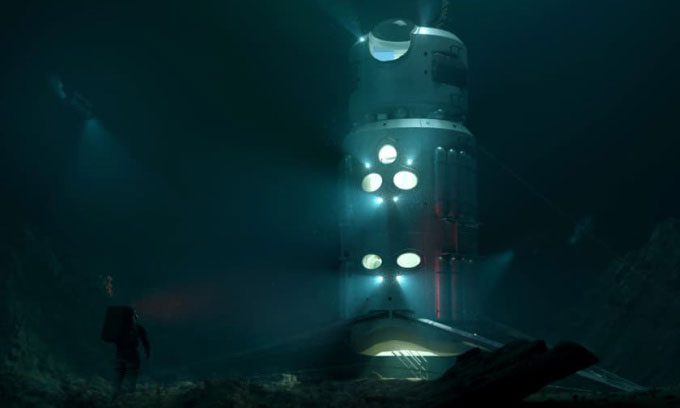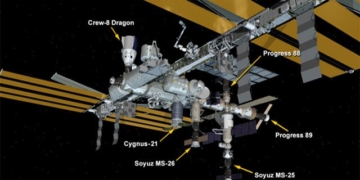The UHAB station has a capacity of 4 astronauts, operates at depths greater than 10m underwater, and is expected to be deployed in 2026.
Space agencies regularly send astronauts in spacesuits down to pools to train for missions in environments similar to those they will encounter in space. To enhance this learning process, the Danish architectural firm SAGA Space Architects has designed the Underwater Habitat (UHAB) to simulate extraterrestrial living conditions, as reported by New Atlas on November 3rd.

Full-scale simulation of UHAB. (Image: SAGA Space Architects).
The final version of the UHAB station will be capable of accommodating up to 4 astronauts for over a month. During this time, UHAB will be anchored on the seabed. Similar to future constructions on the surface of the Moon or Mars, UHAB is completely airtight and self-sustaining. Therefore, during their stay, astronauts will experience the physical and psychological challenges that may arise from living in such confined conditions on another planet.
The 4-person version of UHAB is expected to be deployed in the European seas around 2026 and will be utilized by organizations such as the European Space Agency. The station will have a floor area of 10 m² and will withstand pressures at depths greater than 10 m. Additionally, biologists or oceanographers may also utilize this structure for marine environment research.
SAGA Space Architects has successfully tested a one-person version of UHAB. About a month ago, co-founder Sebastian Aristotelis lived for 48 hours in a 1.5 m² structure at a depth of 7 m near Copenhagen.
“We validated many ideas and learned things we couldn’t have anticipated — for example, the thermal insulation materials, a sealed cellular structure, compressed to such high pressures that it tore the internal structure. We observed slight shrinkage in the tests, but experiencing it inside UHAB provided excellent firsthand knowledge of the forces at play,” he stated.




















































